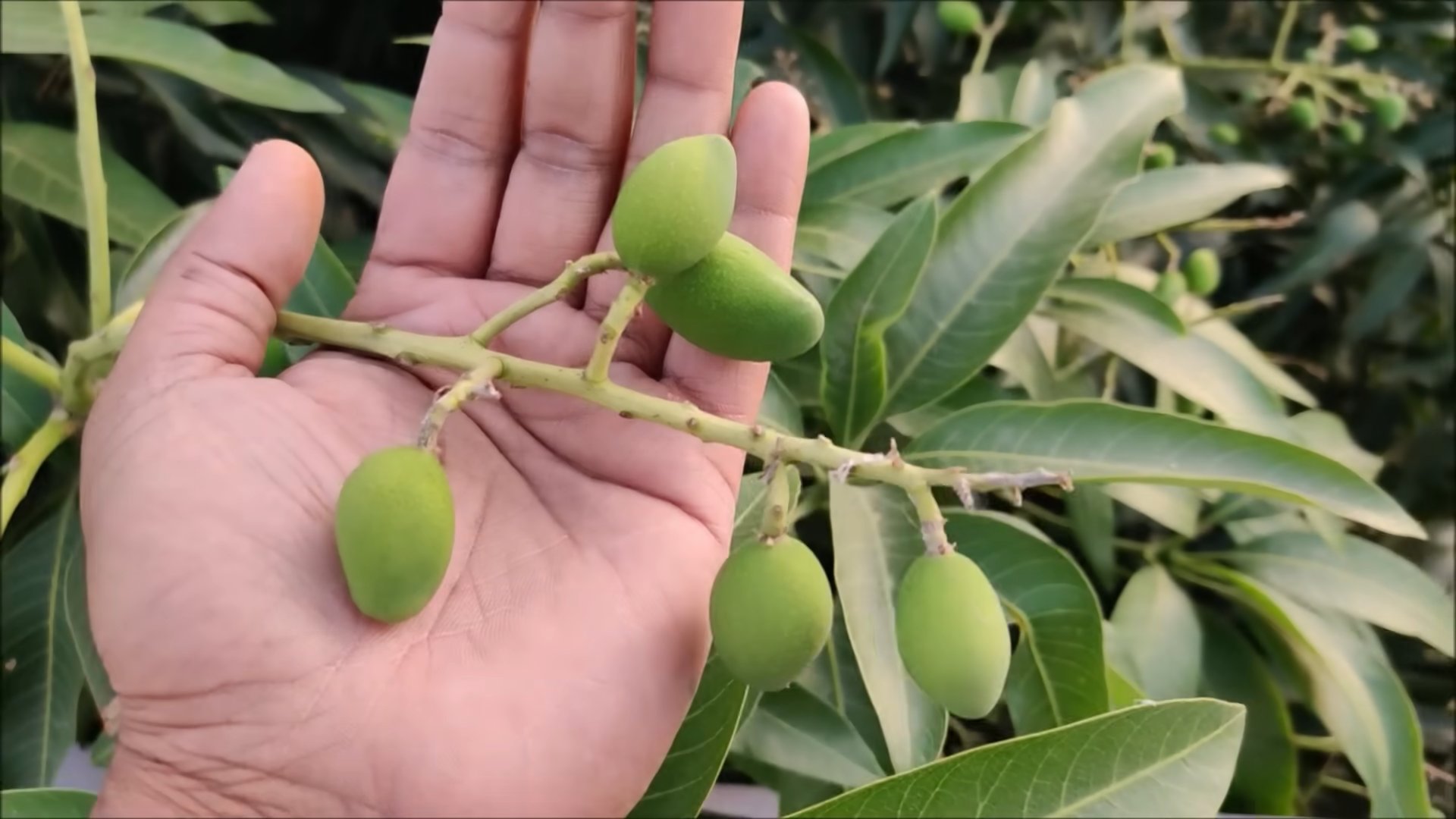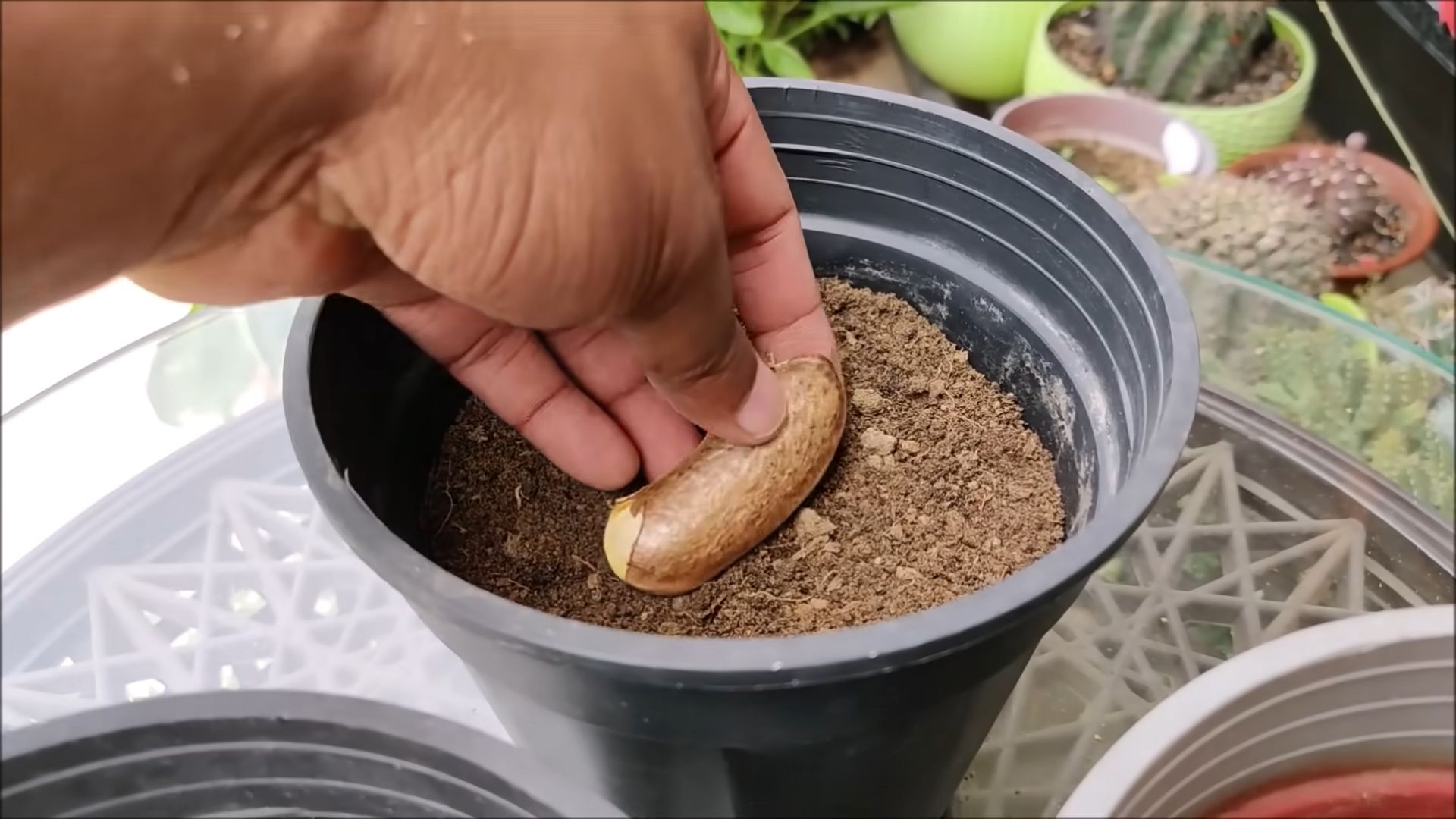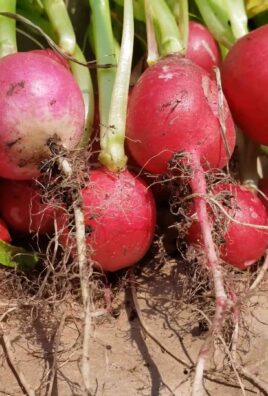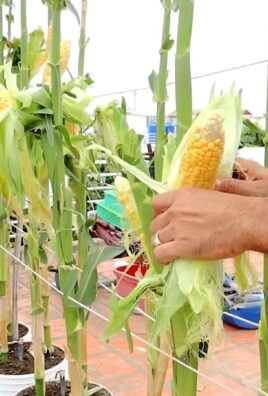Growing Mango Tree from Seed might seem like a tropical dream reserved for expert gardeners, but I’m here to tell you it’s an achievable and incredibly rewarding DIY project for anyone! Forget those expensive nursery saplings – imagine the satisfaction of nurturing a vibrant mango tree from a single seed, right in your own backyard or even in a pot on your balcony.
Mangoes have a rich history, deeply intertwined with cultures across South Asia for thousands of years. Revered for their delicious fruit and symbolic significance, mangoes represent prosperity, love, and even immortality in some traditions. Bringing that history into your home through growing mango tree from seed connects you to a legacy of cultivation and appreciation.
Why should you embark on this DIY adventure? Well, beyond the sheer joy of watching life unfold, growing your own mango tree offers several benefits. You’ll gain a deeper understanding of plant life cycles, reduce your reliance on store-bought produce, and potentially enjoy a bountiful harvest of sweet, juicy mangoes in the years to come. Plus, it’s a fantastic way to connect with nature and add a touch of the tropics to your living space. So, grab a mango, save that seed, and let’s get started on this exciting journey together!

Growing Your Own Mango Tree from Seed: A Tropical Adventure!
Hey there, fellow plant enthusiasts! Ever dreamt of having your own mango tree, laden with juicy, sweet fruit, right in your backyard? Well, guess what? You can! Growing a mango tree from seed is a surprisingly rewarding DIY project. It takes patience, sure, but the feeling of nurturing a tiny seed into a thriving tree is absolutely priceless. Let’s dive into how you can make this happen!
Choosing the Right Mango and Preparing the Seed
Okay, first things first, not all mangoes are created equal when it comes to growing from seed. Here’s what you need to know:
* Variety Matters: Polyembryonic mangoes (meaning they produce multiple seedlings from one seed) are your best bet. Varieties like Tommy Atkins, Haden, and Kent are commonly found in grocery stores, but they’re often monoembryonic (one seedling per seed). Look for varieties like Kensington Pride, Irwin, or Palmer if possible. These are more likely to give you a true-to-type tree. If you’re unsure, ask your local nursery or mango grower for recommendations.
* Freshness is Key: The fresher the mango, the better the chances of germination. Choose a ripe, fragrant mango that you’re about to enjoy eating.
* Seed Extraction: This is where things get a little messy, but don’t worry, it’s not complicated!
Step-by-step Seed Extraction:
1. Enjoy the Mango! First, savor the delicious fruit! Remove as much of the flesh as possible from the seed. The cleaner the seed, the less likely it is to rot.
2. Carefully Cut Open the Husk: This is the trickiest part. The mango seed is encased in a tough husk. Use a sharp knife or pruning shears to carefully cut along the edge of the husk. Be extremely cautious not to damage the seed inside! I usually make a small incision and then use my fingers to gently pry the husk open.
3. Remove the Seed: Once the husk is open, you’ll find the actual seed inside. It looks a bit like a large bean. Gently remove it.
4. Inspect the Seed: Check the seed for any signs of damage or rot. Discard any seeds that look unhealthy.
Germinating the Mango Seed
Now that you have your mango seed, it’s time to get it germinating! There are a couple of methods you can use:
* Paper Towel Method: This is a great way to monitor the seed’s progress.
* Direct Planting: This method is simpler, but you won’t be able to see the roots developing.
Paper Towel Method:
1. Wrap the Seed: Moisten a paper towel (not soaking wet!) and wrap it around the mango seed.
2. Seal in a Bag: Place the wrapped seed in a resealable plastic bag.
3. Warm Location: Store the bag in a warm, dark place, like a cupboard or drawer.
4. Check Regularly: Check the seed every few days. Make sure the paper towel stays moist. If you see any mold, gently clean the seed with a diluted hydrogen peroxide solution (1 part hydrogen peroxide to 9 parts water).
5. Wait for Sprouts: In a week or two (sometimes longer, be patient!), you should see a root emerging from the seed. Once the root is about an inch long, it’s time to plant!
Direct Planting Method:
1. Prepare the Pot: Fill a pot with well-draining potting mix. A mix of potting soil, perlite, and vermiculite works well.
2. Plant the Seed: Plant the mango seed about an inch deep in the soil, with the pointed end facing upwards.
3. Water Gently: Water the soil gently until it’s moist but not soggy.
4. Warm Location: Place the pot in a warm, sunny location.
5. Keep Moist: Keep the soil consistently moist, but avoid overwatering.
Planting Your Sprouted Seedling
Whether you used the paper towel method or direct planting, once your seedling has a good root system and a few leaves, it’s time to transplant it into a larger pot.
1. Choose a Larger Pot: Select a pot that’s at least 6 inches in diameter. Make sure it has drainage holes!
2. Prepare the Potting Mix: Use a well-draining potting mix, similar to what you used for germination.
3. Gently Remove the Seedling: Carefully remove the seedling from its current container, being careful not to damage the roots.
4. Plant the Seedling: Place the seedling in the new pot and fill it with potting mix. Make sure the top of the root ball is level with the soil surface.
5. Water Thoroughly: Water the seedling thoroughly after planting.
Caring for Your Mango Tree Seedling
Now comes the ongoing care to ensure your little mango tree thrives!
* Sunlight: Mango trees love sunlight! Place your seedling in a location that receives at least 6-8 hours of direct sunlight per day.
* Watering: Water regularly, especially during the growing season (spring and summer). Allow the soil to dry out slightly between waterings. Overwatering can lead to root rot.
* Fertilizing: Feed your mango tree seedling with a balanced fertilizer every few months during the growing season. Follow the instructions on the fertilizer package.
* Pruning: Prune your mango tree seedling to encourage branching and a strong structure. Remove any dead or diseased branches.
* Pest and Disease Control: Keep an eye out for pests and diseases. Common pests include aphids, scale, and mealybugs. Treat any infestations promptly with insecticidal soap or neem oil.
* Protect from Frost: Mango trees are sensitive to frost. If you live in an area with cold winters, you’ll need to protect your seedling from frost. You can bring it indoors or cover it with a frost blanket.
Patience is a Virtue!
Growing a mango tree from seed takes time and patience. It can take several years for a mango tree grown from seed to produce fruit. However, the journey is well worth it! Watching your little seedling grow into a beautiful, fruit-bearing tree is an incredibly rewarding experience.
Important Considerations:
* Grafting: Mango trees grown from seed may not produce fruit that is exactly the same as the parent tree. If you want to ensure that your tree produces a specific type of mango, you can graft a branch from a known variety onto your seedling. Grafting is a more advanced technique, but it can be worth it if you’re serious about growing a specific type of mango.
* Climate: Mango trees thrive in warm, tropical climates. If you live in a cooler climate, you may need to grow your mango tree in a container so you can bring it indoors during the winter.
* Space: Mango trees can grow quite large, so make sure you have enough space for your tree to grow. If you’re growing your tree in a container, you’ll need to repot it into a larger container as it grows.
Troubleshooting
Even with the best care, you might encounter some challenges. Here are a few common issues and how to address them:
* Seed Not Germinating: Sometimes, seeds just don’t germinate. It could be due to the seed’s viability, temperature, or moisture levels. Try again with a fresh seed and ensure proper conditions.
* Seedling Wilting: Wilting can be caused by overwatering, underwatering, or root rot. Check the soil moisture and adjust your watering accordingly. If you suspect root rot, repot the seedling in fresh soil.
* Yellowing Leaves: Yellowing leaves can indicate nutrient deficiencies. Fertilize your seedling with a balanced fertilizer.
* Pest Infestation: Regularly inspect your seedling for pests. Treat infestations promptly with appropriate methods.
Final Thoughts
Growing a mango tree from seed is a labor of love, but the rewards are immense. Imagine harvesting your own delicious mangoes, knowing you nurtured the tree from a tiny seed. It’s a truly special feeling. So, go ahead, give it a try! You might just surprise yourself with your green thumb. Happy growing!

Conclusion
So, there you have it! Growing a mango tree from seed isn’t just a fun project; it’s a rewarding journey that connects you to the natural world and allows you to cultivate your own delicious fruit. While it requires patience and a little bit of effort, the satisfaction of nurturing a tiny seed into a thriving tree is unparalleled. Forget the expensive nursery saplings – this DIY trick empowers you to create your own mango oasis, tailored to your specific climate and preferences.
Think about the possibilities! Imagine gifting a homegrown mango tree to a loved one, knowing you nurtured it from the very beginning. Or picture yourself harvesting your own juicy, sun-ripened mangoes, bursting with flavor that surpasses anything you can find in a store. This isn’t just about growing a tree; it’s about creating an experience, a legacy, and a connection to the earth.
Don’t be afraid to experiment! Once you’ve mastered the basics, try different mango varieties. Each type boasts a unique flavor profile, texture, and size. You could even try grafting your seedling onto a more established mango tree to accelerate fruit production or introduce desirable traits. The possibilities are endless!
Remember, success with growing a mango tree from seed hinges on providing the right conditions: warmth, sunlight, and well-draining soil. Don’t get discouraged if your first attempt isn’t perfect. Learning from your mistakes is part of the process. Keep experimenting, keep learning, and keep nurturing your little mango seedling.
We wholeheartedly encourage you to embark on this exciting adventure. Share your experiences with us! Let us know which mango variety you chose, what challenges you encountered, and what successes you celebrated. Post pictures of your seedlings, share your tips and tricks, and become part of a community of passionate mango growers. Your insights could inspire others to take the plunge and discover the joy of growing their own mango trees. So, grab a mango seed, get your hands dirty, and start growing your own slice of tropical paradise today! This DIY trick is a game-changer for any fruit enthusiast.
Frequently Asked Questions (FAQ)
Q: What is the best time of year to plant a mango seed?
A: The ideal time to plant a mango seed is during the warm months, typically late spring or early summer. This allows the seedling to benefit from the consistent warmth and sunlight needed for germination and initial growth. Avoid planting during the colder months, as the seed may struggle to germinate in cooler temperatures. If you live in a region with mild winters, you may be able to start the process indoors during the late winter months.
Q: How long does it take for a mango seed to germinate?
A: Germination time can vary depending on the variety of mango, the freshness of the seed, and the environmental conditions. Generally, it takes anywhere from one to four weeks for a mango seed to germinate. Providing consistent warmth and moisture will help speed up the process. Be patient and avoid disturbing the seed too often, as this can hinder germination.
Q: What type of soil is best for growing a mango tree from seed?
A: Mango trees thrive in well-draining soil that is rich in organic matter. A sandy loam soil is ideal, as it allows for good drainage while still retaining enough moisture. Avoid heavy clay soils, as they can become waterlogged and suffocate the roots. You can improve the drainage of your soil by adding perlite or coarse sand. Amending the soil with compost or well-rotted manure will provide essential nutrients for healthy growth.
Q: How much sunlight does a mango seedling need?
A: Mango seedlings require plenty of sunlight to thrive. Aim for at least six to eight hours of direct sunlight per day. If you are growing your seedling indoors, place it near a sunny window or use a grow light to supplement natural light. Insufficient sunlight can lead to weak, leggy growth.
Q: How often should I water my mango seedling?
A: Water your mango seedling regularly, especially during the first few months after germination. Keep the soil consistently moist, but avoid overwatering, which can lead to root rot. Allow the top inch of soil to dry out slightly between waterings. During the dormant season (winter), reduce watering frequency.
Q: When should I transplant my mango seedling into a larger pot or into the ground?
A: Once your mango seedling has developed several sets of true leaves and its root system has become well-established, it’s time to transplant it into a larger pot or into the ground. Choose a pot that is at least twice the size of the current pot. If you are planting it in the ground, select a location that receives plenty of sunlight and has well-draining soil. Be careful not to damage the roots during transplanting.
Q: How long does it take for a mango tree grown from seed to produce fruit?
A: Mango trees grown from seed typically take longer to produce fruit than grafted trees. It can take anywhere from three to six years, or even longer, for a seedling mango tree to bear fruit. Grafting can significantly reduce the time to fruiting.
Q: Can I grow a mango tree from seed in a container?
A: Yes, you can grow a mango tree from seed in a container. Choose a large container that is at least 24 inches in diameter and has drainage holes. Use a well-draining potting mix and provide regular watering and fertilization. Container-grown mango trees may require more frequent watering and fertilization than those grown in the ground.
Q: What are some common pests and diseases that affect mango trees?
A: Mango trees can be susceptible to various pests and diseases, including aphids, scale insects, mango hoppers, powdery mildew, and anthracnose. Regularly inspect your tree for signs of infestation or disease. Treat any problems promptly with appropriate insecticides or fungicides. Good air circulation and proper watering can help prevent many diseases.
Q: How can I encourage my mango tree to fruit?
A: To encourage your mango tree to fruit, ensure it receives plenty of sunlight, water, and nutrients. Fertilize regularly with a balanced fertilizer that is specifically formulated for fruit trees. Pruning can also help promote fruiting by improving air circulation and sunlight penetration. Consider using root pruning techniques to encourage flowering.





Leave a Comment